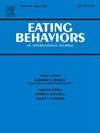Exploring clinical phenotypes of food addiction and its distress correlates: A cross-sectional evaluation in treatment-seeking individuals with obesity
IF 2.4
3区 医学
Q2 PSYCHIATRY
引用次数: 0
Abstract
Introduction
Food addiction (FA) shares neurobiological and behavioral mechanisms with substance use disorders, including craving and compulsive consumption despite harm and significant impairment. This study examines the prevalence of FA among treatment-seeking individuals with obesity, focusing on the contribution of emotional dysregulation, eating behaviors, and distress tolerance, to draw parallels with substance use frameworks.
Methods
This cross-sectional study included 125 individuals with obesity (BMI > 30 kg/m2) and FA diagnosis was performed using the Yale Food Addiction Scale 2.0 (YFAS-2.0). We employed the Difficulties in Emotional Regulation Scale (DERS), Distress Tolerance Scale (DTS), Interpersonal Reactivity Index (IRI) to evaluate emotional, empathy and distress measures, and performed an Exploratory Factory Analysis to evaluate the adequacy of DTS and IRI. We used LASSO regression to identify FA predictors, mediation analysis to explore indirect effects among significant variables and FA.
Results
FA was present in 37.6 % of participants, with higher prevalence among individuals with binge eating (68.4%) and grazing (54.8 %). DERS was higher in individuals with FA (MD = 25.79; 95 % C.I. [18.45, 33.13], p < .01), while distress tolerance was lower (MD = −7.15, 95 % C.I. [−10.5, −3.84], p < .01). LASSO regression identified pathological eating behaviors as the strongest predictors of FA, alongside emotional dysregulation. Mediation analysis revealed that emotional dysregulation mediated the relationship between distress tolerance and FA.
Discussion
FA represents a frequent phenomenon in obesity, often driven by low distress tolerance and poor emotional regulation, mirroring other addictions. Pathological eating behaviors may represent different phenotypic expressions of FA. Considering the relevant psychological underpinning, integrating tailored psychological interventions into obesity management may promote sustained weight management and improved outcomes.
探索食物成瘾及其痛苦相关的临床表型:肥胖症寻求治疗个体的横断面评估
食物成瘾(FA)与物质使用障碍(包括渴望和强迫性消费)具有相同的神经生物学和行为机制,尽管存在危害和重大损害。本研究调查了寻求治疗的肥胖患者中FA的患病率,重点关注情绪失调、饮食行为和痛苦耐受性的贡献,并将其与药物使用框架进行比较。方法本横断面研究纳入125例肥胖(BMI >;30 kg/m2),采用耶鲁食物成瘾量表2.0 (YFAS-2.0)进行FA诊断。采用情绪调节困难量表(DERS)、痛苦容忍量表(DTS)、人际反应指数(IRI)对被试的情绪、共情和痛苦措施进行评估,并通过探索性工厂分析对DTS和IRI的充分性进行评估。我们使用LASSO回归来确定FA的预测因子,中介分析来探索显著变量与FA之间的间接影响。结果37.6%的参与者存在fa,其中暴饮暴食(68.4%)和放牧(54.8%)的人群患病率更高。FA患者的DERS较高(MD = 25.79;95% C.I. [18.45, 33.13], p <;.01),而痛苦承受能力较低(MD = - 7.15, 95% C.I. [- 10.5, - 3.84], p <;. 01)。LASSO回归发现病理性饮食行为与情绪失调一起是FA的最强预测因子。中介分析显示,情绪失调在痛苦耐受与FA之间起中介作用。fa在肥胖中是一种常见的现象,通常是由较低的痛苦耐受性和较差的情绪调节引起的,反映了其他成瘾。病理进食行为可能代表FA的不同表型表达。考虑到相关的心理学基础,将量身定制的心理干预纳入肥胖管理可能会促进持续的体重管理和改善结果。
本文章由计算机程序翻译,如有差异,请以英文原文为准。
求助全文
约1分钟内获得全文
求助全文
来源期刊

Eating behaviors
Multiple-
CiteScore
4.20
自引率
3.60%
发文量
65
审稿时长
60 days
期刊介绍:
Eating Behaviors is an international peer-reviewed scientific journal publishing human research on the etiology, prevention, and treatment of obesity, binge eating, and eating disorders in adults and children. Studies related to the promotion of healthy eating patterns to treat or prevent medical conditions (e.g., hypertension, diabetes mellitus, cancer) are also acceptable. Two types of manuscripts are encouraged: (1) Descriptive studies establishing functional relationships between eating behaviors and social, cognitive, environmental, attitudinal, emotional or biochemical factors; (2) Clinical outcome research evaluating the efficacy of prevention or treatment protocols.
 求助内容:
求助内容: 应助结果提醒方式:
应助结果提醒方式:


